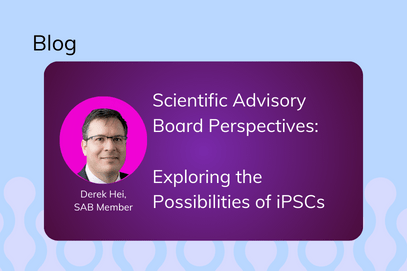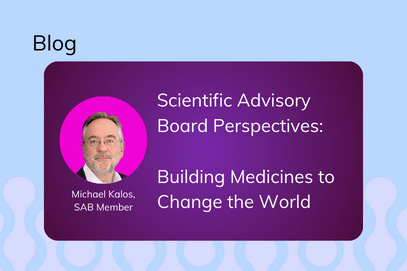RoslinCT Blog Series: Scientific Advisory Board Perspectives
Michael Chambers, RoslinCT SAB Member
Addressing Key Challenges in Cell Therapy
Michael Chambers, co-founder of Aldevron and member of our Scientific Advisory Board, shared his perspective on the most significant opportunities and challenges facing the cell therapy industry. At Aldevron, he provides strategic guidance, particularly in industry trend analysis and the development of emerging technologies.
What are the biggest challenges facing the fields of cell and gene therapy?
The cell and gene therapy industry, particularly in the realm of CAR T-cell therapies, is currently experiencing a remarkable surge in demand. This growth trend, expected to rise substantially by 2030, brings to the forefront the critical challenge of scaling up manufacturing processes. Meeting this burgeoning demand necessitates a comprehensive reevaluation and expansion of existing manufacturing capabilities, ensuring that production can keep pace with the needs of an ever-increasing patient population.
However, the challenges extend beyond mere production volume. A key concern in this industry is the quality and reliability of raw materials. Given the variability in these materials, there’s a palpable risk of inconsistent product quality. This variability not only compromises the effectiveness of the therapies but also impacts manufacturing efficiency. More importantly, it poses a risk of non-compliance with stringent regulatory standards, a crucial aspect in a field where precision and reliability are paramount.
Compounding these challenges are the complexities inherent in the supply chains of the sector. They are not only intricate but also need to adhere to high clinical standards. Their efficiency and reliability are vital in ensuring the integrity and efficacy of therapies from the point of production to patient delivery. Any disruption or inefficiency in these supply chains can have significant repercussions, affecting the timely delivery of critical therapies to patients in need.
Another emerging challenge which exists in the contract development and manufacturing Organization (CDMO) industry is the need for enhanced analytics. The production of biological drugs, often a rapid process, is ironically hampered by the current analytics processes, which are time-consuming and costly. This discrepancy creates a bottleneck, delaying the availability of drugs while also escalating costs. Hence, improving analytical methods is not just a technical necessity but also a strategic imperative to enhance efficiency, reduce costs, and, most importantly, expedite the delivery of life-saving therapies to patients.
Addressing these challenges is essential for the continued growth and success of this vital industry.
What will be needed to overcome these challenges?
In cell and gene therapy, especially within biomanufacturing, the synergy between different sectors is not just beneficial, it is crucial. This unified approach is key to tackling the challenges and leveraging the opportunities that arise from breakthroughs in our understanding of disease mechanisms.
Central to this effort is the development of innovative manufacturing technologies. Embracing new methods like continuous flow manufacturing could significantly boost production capacity and cut costs. This progress hinges not just on a single entity, but on a joint venture involving academic institutions, industry leaders, and regulatory bodies, all dedicated to research and development.
Forging strategic alliances is also vital. Pharmaceutical and biotechnology companies would benefit greatly from partnering with various organizations. These relationships, from early research stages to clinical trials, are essential for exchanging knowledge and resources. Such partnerships can expedite the development and scaling of cell and gene therapies, enhancing their accessibility and effectiveness.
Equally important is the adoption of data analytics and artificial intelligence. These tools have the potential to transform manufacturing processes, streamline supply chain management, and improve response strategies. A coordinated effort among various stakeholders, including technology experts, is necessary to devise solutions that boost efficiency and ensure reliability.
Addressing the growing demand for skilled professionals is another challenge. There is a pressing need for more specialized training and education in this field. Creating comprehensive educational programs and training opportunities requires the consolidated efforts of educational institutions, industry players, and government bodies, all working towards equipping the next generation of experts.
Regulatory guidance is also a critical component. Agencies must offer clear and supportive frameworks for the development and approval of cell and gene therapies, ensuring they meet safety and efficacy standards while being accessible to those in need.
In essence, by concentrating on these areas, a diverse range of sectors can effectively address the unique challenges in cell and gene therapy. This unified approach is fundamental to advancing patient care in genetic medicine.


